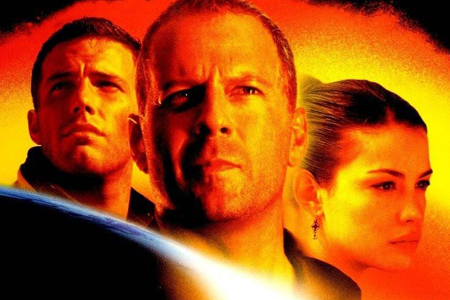“Dinosaur-Killer” ASTEROIDS Way More Common Than Thought. Wee!
Apparently Jupiter is like, way slacking. You see, that big gassy son of a bitch is supposed to be our bulwark against cosmic refuse and shit smashing into us and like, ending civilization. Yet according to new reports cataclysmic asteroids used to be way more common than we’d rather think about.
io9:
[Brand] new findings indicate that massive, “dinosaur-killer” asteroids were likely part of a larger barrage of extraterrestrial impact events that endured for billions of years longer than previously believed. Earth’s history just got a lot more violent.
Both studies, published together in this week’s issue of Nature, are largely concerned with tiny, millimeter-wide droplets known as spherules, which researchers have found embedded in layers of rock all over the world. You can think of spherules as the fingerprints left behind by enormous impact events.
When a massive asteroid rams into Earth, the sheer force of the collision is powerful enough to send plumes of molten and vaporized rock careening out into space. Jettisoned material that fails to escape Earth’s gravitational pull cools, condenses and solidifies into spherules. When they return to Earth, these tiny particles coat the planet’s surface in a thin layer known as a spherule bed. Billions of years later, researchers can examine these layers and estimate when a particular spherule bed formed. The layer of spherules found in the rock sample featured here, for example, dates to about 2.63 billion years ago.
But rock samples like this one pose a problem for planetary scientists. Spherule beds deposited between 3.5 and 1.7 billion years ago have been found all over the world – but this time frame doesn’t match up with existing models of unusually violent asteroid activity, specifically a span in our solar system’s history known as the Late Heavy Bombardment (LHB). According to what’s known as the Nice model, the LHB lasted from 4.1 to 3.8 billion years ago, when the irregular orbits of our cosmic neighborhood’s outermost planets triggered a cannonade of asteroids and comets throughout the Solar System. What, then, was the source of the extraterrestrial assault responsible for the spherule beds that geologists see dating from 3.8-billion-years ago onward?
According to a new model, created by a research team led by planetary dynamicist William Bottke, these asteroids likely originated from a long-extinct extension of the asteroid belt located between the orbits of Mars and Jupiter. Computer simulations that incorporate this ancient extension not only reproduce a modern population of asteroids called the Hungarias, they also predict the occurrence of roughly 70 impact events, on the same scale or larger as the one that wiped out the dinosaurs, between 3.7 and 1.7 billion years ago. In brief: their results suggest that the LHB lasted, quite literally,billions of years longer than previously thought.
The simulation results of Bottke and his colleagues are complemented by a new, more comprehensive method of spherule analysis, devised by geophysicists Jay Melosh and Brandon Johnson.
“We can look at these spherules, see how thick the layer is, how big the spherules are, and we can infer the size and velocity of the asteroid,” explains Melosh. “We can go back to the earliest era in the history of the Earth and infer the population of asteroids impacting the planet.”
In doing so, Melosh and Johnson, like Bottke and his colleagues, found evidence for an extended Late Heavy Bombardment – with extra emphasis on the word “heavy”.
TL;DR? Shit used to be wayyyyyyyy more hectic around here.




